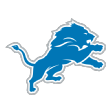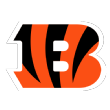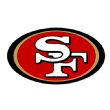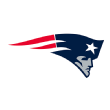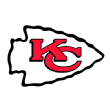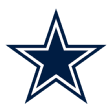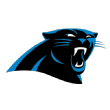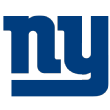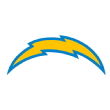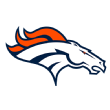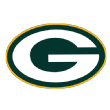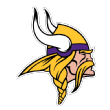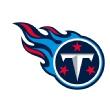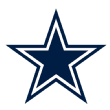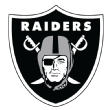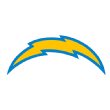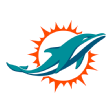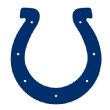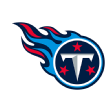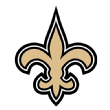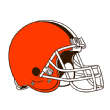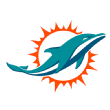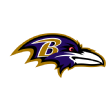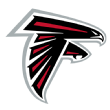NFL training camps: Fantasy football tips, nuggets and what I learned at Titans, Colts and Saints stops
ESPN PLUS ($ MATERIAL)
Hopefully, you didn't think I was done.
Last week, I
recapped the first four stops of my training camp tour, when I visited the Bills, Steelers, Browns and Lions. I made three more stops. Drove from Detroit to Indianapolis and then from Indianapolis to Nashville, then flew from Nashville to New Orleans. (Eight-and-a-half hours is a little bit outside of my maximum preferred driving time.) Then I finally flew home after two weeks on the road.
Since many of you seemed to enjoy the updates from my first four stops, I thought I'd send in a recap of the final three. These include notes on the quarterback situations in Indianapolis and New Orleans, the latest on star wide receivers
Julio Jones and
Michael Thomas and a whole bunch of tips that could help you draft your
fantasy football team soon.
Dates I visited: Aug. 7-8
The first thing you should know is that the Colts aren't panicking. They opened training camp with a couple of gut punches -- news of
foot injuries that required surgery and extended missed time for newly acquired starting quarterback
Carson Wentz and All-Pro guard
Quenton Nelson. No one was pretending these things didn't matter, but neither were the Colts scouring the league for potential replacements. The strong sense I got was that the team expected Wentz and Nelson to be able to return on the
shorter end of the broad timetable of 5 to 12 weeks that was initially given, which means they could have one or both of them back for Week 1, if not soon after.
When I was there, second-year quarterback
Jacob Eason was running the first-team offense but didn't look great. I was not surprised when, two days later, I heard the news that rookie sixth-round pick
Sam Ehlinger was getting first-team reps. The Colts love Eason's arm and overall talent, but everyone I asked about Eason, a fourth-round pick in 2020, also mentioned Ehlinger's presence and poise. If the Colts need someone to keep the car out of a ditch for a couple of weeks while they wait for Wentz and just not mess anything up too badly, it wouldn't be a surprise to see them pick Ehlinger to start over Eason.
"The game is slower for him [than it usually is for a rookie], which is good," Colts offensive coordinator Marcus Brady told me of Ehlinger. "He sees it well, processes fast. He's just got to get the reps. You can tell he's constantly thinking, making checks. He had one that was a delay of game, so I was like, 'I like the thought process, I like that you recognized, you've just got to be quicker.'"
Again, though, the Colts believe they might not have to be without Wentz -- for whom they
gave up multiple draft picks in a February trade -- for long, and the offseason he had prior to the injury encouraged them that he can be the player he was early in his career when he and Colts coach Frank Reich worked together in Philadelphia.
"We were pretty excited about what we had seen in practice -- really excited, in fact," Colts general manager Chris Ballard told me. "He's looked like what we hoped he would."
Can the D hold it down?
If the defense has to handle things while the offense gets healthy and comes together, the Colts believe it can. They consider their front seven a major strength, with star linebacker
Darius Leonard, fresh off a
new five-year contract extension, in the middle of everything and guys such as
DeForest Buckner and
Grover Stewart pushing around people up front. Brady even joked that going against Buckner and the Colts' defensive line was making practices pretty tough with backup quarterbacks and the backup offensive linemen who have been playing in place of Nelson and injured center
Ryan Kelly.
The organization is particularly excited about rookie pass-rusher
Kwity Paye, their first-round pick in April. The Colts have him lined up as a starter in practice, and defensive coordinator Matt Eberflus told me that Paye has been delivering. "Plays the run better than we thought he would, and he can really turn the corner," Eberflus said.
They expect an immediate impact from the rookie, have seen major strides from 2019 second-round pick
Ben Banogu and expect rookie second-rounder
Dayo Odeyingbo -- who
tore an Achilles in January -- to contribute at some point this season as well. The Colts are confident in their defensive line depth.
Indianapolis fantasy football tips
• I moved
Jonathan Taylor up a bit in my fantasy running back rankings after this visit. Reich can't stop gushing about him. "J.T. looks dominant," Reich said. "The way he ended up last year, and he feels like he's in midseason form right now with the way he's seeing it, his cuts and his footwork."
Ballard told me Taylor, a second-round pick in 2020, has taken a big step forward in the passing game as well. They still have pass-catching back
Nyheim Hines, and
Marlon Mack, who rushed for 1,091 in 2019, is coming back from
an Achilles injury. Taylor, they believe, has the ability to do everything. "What he's doing in the passing game here in camp is really impressive," Ballard said. "He's worked hard on it, and it's going to be pretty special. He's a kid that gets stronger. I mean, carry 1 and carry 25. He's got great conditioning, great endurance. We think this guy is really special."
• The Colts' other second-round pick last year was wide receiver
Michael Pittman, and if you're wondering whether he's the Colts' No. 1 wideout, you should not. Reich said Pittman also looks "dominant," and that Pittman went into the offseason "with a mission" after his strong showing in
the playoff loss in Buffalo (six touches, 101 yards).
"He's just taking in all the knowledge he can," Colts cornerback
Xavier Rhodes told me about Pittman. "I try to give him little tips that I can from going against all the receivers I've gone against over the years, and you can tell he wants all the information. He wants to be great."
• The offense won't work if the offensive line can't block, of course, so if you're looking at Colts fantasy players you need to know about the health of the line. We've already talked about Nelson, who should be back before long. Kelly, who's dealing with an elbow injury, is expected back in time for the season. And left tackle
Eric Fisher, signed this offseason after
tearing his Achilles in the AFC Championship Game while with Kansas City, should be able to play early in the season. The Colts haven't publicly ruled out the possibility of Fisher being back in time for Week 1. Realistically, it seems as if it'll have to be at least a few more weeks than that, but they believe he can play in September, which only helps all of these other guys.
Dates I visited: Aug. 9-10
I always ask coaches and general managers what's the biggest thing they're trying to get figured out in camp. Titans coach Mike Vrabel was quick with his answer.
"Just get healthy," Vrabel said. "A lot of guys aren't out there. It's hard to get better when guys aren't out there. But it's something we've got to manage."
Vrabel estimated that there were 15 players out of practice with health issues Tuesday, when we spoke. And this was on a day when top wide receiver
A.J. Brown, who has been eased back into action following
offseason knee surgery, actually
was out there.
Vrabel seemed more concerned about guys being able to get up to speed than he did with health issues lingering into the offseason. They have reason to believe trade acquisition
Julio Jones will answer the bell even if he is managing his way through camp. And edge rusher
Bud Dupree, whom they signed to a
big-money free-agent deal even though he tore his Achilles in December, appears to be
on track for Week 1. The Titans activated Dupree from the PUP list a week and a half ago so he could spend time on the practice field with the rest of the team and get used to hearing the play calls, even if he's not ready to actually practice yet. He's upbeat about his recovery.
"Right now, physically I feel good, mentally I feel good, 100%," Dupree told me. "So now it's just a timetable of whatever those guys want."
As a team, Tennessee had just 19 sacks last season. Four of those came in its final regular-season game, and only the Jaguars and Bengals had fewer overall. Dupree was a priority add as an edge rusher to help with that, but the team also hopes for more pass-rush production out of 2018 second-round pick
Harold Landry on the edge and 2019 first-rounder
Jeffery Simmons from the interior. The Titans' defense allowed opponents to convert a league-high 51.9% of their third downs in 2020.
"Last year obviously left a bad taste for the guys who were here," Titans safety
Kevin Byard told me. "Our offense carried us for the most part, and we don't want to have that feeling again."
Vrabel, the former Patriots linebacker, rides players hard in practice. Rookie first-round cornerback
Caleb Farley got scolded loudly and temporarily yanked from team drills the first day I was there, and late last week Vrabel said Farley wasn't ready to play in the team's first preseason game.
"I know he cares a lot," Byard said of Farley. "Because when he doesn't make a play or he messes up a little bit, you can tell. I know he wants to make every single play, being a young guy and working back from injury, he's out there trying to make as many plays as he can. But things ain't going to be perfect when you first get out there. Make sure that, if you don't make a play, forget it and drive on. And if you make a play, forget it and drive on."
The 'new' guy on offense
With highly successful offensive coordinator Arthur Smith having left to become the Falcons' coach, the new offensive coordinator is Todd Downing, who has been on the staff as tight ends coach the past two years. I asked Vrabel how that transition has been.
"Seamless," Vrabel said. "A lot of the same stuff, a lot of carryover for the guys. I think we've tried to promote guys from within, which keeps the consistency of the packages. You try to add some stuff new each year, but also try to keep the bulk of what we've done consistent."
Downing spent one year as the Raiders' offensive coordinator in 2017, and it didn't go well. He was let go after that season when Jon Gruden was hired. Since then, Downing has worked under Kevin Stefanski and Gary Kubiak in Minnesota and under Smith in Tennessee. He surely knows enough not to mess too much with the way the Titans' offense has operated the past two seasons.
Quarterback
Ryan Tannehill told me that the transition was going well, that he likes and respects Downing and that he doesn't expect it to take long for him to get used to the new voice in his ear calling the plays. The Titans rank first in the league in offensive efficiency since Tannehill became the starter midway through the 2019 season.
Tennessee fantasy football tips
• Downing believes
Anthony Firkser can be a complete tight end and help replace
Jonnu Smith's production -- as long as the coaching staff can get the non-pass-catching portion of his game in shape. The Titans have been working with Firkser on his blocking all offseason. And yes, I know you don't get fantasy points for blocking. But if your question is whether Firkser is a startable tight end in fantasy, then you're going to want to know how much he's going to be on the field. The answer to that lies in how well he improves as a blocker.
The Titans have high hopes of making Firkser an every-down contributor. Watch the reports out of the rest of their camp to see how he's coming along as a blocker for clues as to whether you can count on him as a starter in fantasy.
• The Titans do not let running back
Derrick Henry work in team drills in practice, and it would be less surprising to see
me in one of their preseason games than it would to see Henry in one. This is because they know what they have there and don't want to mess with it. I asked Henry if he has changed or evolved his offseason training routine since he has been in the NFL and he said no. "I tell our media, if it ain't broke, don't fix it," he said. You should take the same approach to whatever strategy you've used regarding Henry in fantasy the past two years.
• I understand that the acquisition of Jones has clouded the Titans' fantasy picture at wide receiver in the minds of some, but I don't think it should. Brown is the alpha wide receiver here. He's eight years younger than Jones and has just 39 fewer receiving yards than Jones over the past two seasons. And his connection with Tannehill runs deeper than anyone else's. Brown was a rookie in 2019 when Tannehill opened the season as
Marcus Mariota's backup, and the two were connecting on second-team reps in practice even before Tannehill took over as the starter.
It might be an insult to Jones' résumé to project him to just replace
Corey Davis' 65 catches and 984 yards from last season, but that is probably probably pretty close to a fair expectation for the 32-year-old. Jones is already missing practice time with injury, as he did so often the past few years in Atlanta. The Titans are thrilled to have him and believe he will add a lot to their offense. But I think their expectations are realistic, and their feelings about Brown as a true No. 1 -- both now and well into the future -- are well established.
• The bigger fantasy question might turn out to be the identity of Tennessee's Nos. 3 and 4 wide receivers, especially if there's a chance Jones and/or Brown have to miss time with injury. The team signed
Josh Reynolds even before it knew it was getting Jones, so it has a role in mind for him. But both
Chester Rodgers and
Marcus Johnson are having strong camps, and the Titans eventually have high hopes for fourth-round rookie
Dez Fitzpatrick. They might end up with more receivers than they can keep, but watch to see who's getting the first-team reps the rest of the way in camp while Jones rests, and you might get some clues as to how to hedge your bets in the Tennessee passing game.
Date I visited: Aug. 11
What you want to know here is who the starting quarterback is going to be. What I can tell is that
I don't know and I don't think the Saints do yet, either. They are
working hard to balance everything equally between
Jameis Winston and
Taysom Hill so that they and everyone else know it's a true competition. They get the same number of practice reps. If you ask to interview one of them, they bring you the other one right after, whether you asked for him or not.
So when I got a couple of minutes with coach Sean Payton, I asked him whether he had a timetable for a decision, and he said no.
"It's different from the old training camps, where you might be in camp six or seven weeks, so it's condensed into a shorter period of time," Payton said. "It's important for us to get into this preseason. I'd like to see these guys operate, both of them, in all three of these games. We're getting a lot of valuable work here, but certainly by the end of the preseason games and possibly maybe before that, a week prior to the last game. But I haven't sat down as a staff and said, 'This is the date.' Honestly, there are other things that I'm focused with that are just as important for this team."
Those things include depth at cornerback, where the Saints have signed three veterans since the start of camp and seen
Patrick Robinson, who was in line to play a big role at the position, retire. Add in the possibility that
Marshon Lattimore has to miss games if the league suspends him for
his offseason arrest, and this is a major area of concern that will prompt New Orleans to scour the rest of the league for help as players start to get cut or become available in trades.
"Yeah, we're paying close attention to that," Payton said. "And I would say there's a good chance for us maybe that player may or may not be in the building right now."
The other spot where there's cause for concern is defensive tackle, where three of the four players the Saints leaned on last season are either gone or unavailable to start the season.
Sheldon Rankins signed with the Jets. They traded
Malcom Brown to the Jaguars. And
David Onyemata is
suspended for the first six games of the season for violating the league's policy on performance-enhancing drugs. Those are things that occupy Payton's mind at this point in camp to at least the same extent -- if not more -- than the decision he has to make at quarterback.
"Relative to the quarterback decision, it'll come in time -- certainly before we get to the regular season, but I haven't put a date on it," he said. "Hopefully it's something we begin to see a little more clarity on. Both of these guys are working their tail off, they're both well respected by their teammates, they're really, really good leaders, and that's a good thing."
New Orleans fantasy football tips
• Payton said he believes that wide receiver
Michael Thomas is
ahead of schedule in his recovery from foot surgery and that the situation at wide receiver is not keeping him up at night. As for who catches the ball in the meantime ... well,
Marquez Callaway has been turning a lot of heads with his practice performances.
Tre'Quan Smith and
Deonte Harris have both been in the offense for a while, and Harris is a player the Saints believe can contribute more than he has in the past at receiver due to his high-end speed.
Chris Hogan, who was
added to the roster late last month, has had a good camp could be a long shot to make the 53-man roster. Honestly, after watching one practice, I came away thinking I wouldn't be stunned if star running back
Alvin Kamara led the Saints in catches in 2021, no matter who the quarterback is.
Those things include depth at cornerback, where the Saints have signed three veterans since the start of camp and seen
Patrick Robinson, who was in line to play a big role at the position, retire. Add in the possibility that
Marshon Lattimore has to miss games if the league suspends him for
his offseason arrest, and this is a major area of concern that will prompt New Orleans to scour the rest of the league for help as players start to get cut or become available in trades.
"Yeah, we're paying close attention to that," Payton said. "And I would say there's a good chance for us maybe that player may or may not be in the building right now."
The other spot where there's cause for concern is defensive tackle, where three of the four players the Saints leaned on last season are either gone or unavailable to start the season.
Sheldon Rankins signed with the Jets. They traded
Malcom Brown to the Jaguars. And
David Onyemata is
suspended for the first six games of the season for violating the league's policy on performance-enhancing drugs. Those are things that occupy Payton's mind at this point in camp to at least the same extent -- if not more -- than the decision he has to make at quarterback.
"Relative to the quarterback decision, it'll come in time -- certainly before we get to the regular season, but I haven't put a date on it," he said. "Hopefully it's something we begin to see a little more clarity on. Both of these guys are working their tail off, they're both well respected by their teammates, they're really, really good leaders, and that's a good thing."
New Orleans fantasy football tips
• Payton said he believes that wide receiver
Michael Thomas is
ahead of schedule in his recovery from foot surgery and that the situation at wide receiver is not keeping him up at night. As for who catches the ball in the meantime ... well,
Marquez Callaway has been turning a lot of heads with his practice performances.
Tre'Quan Smith and
Deonte Harris have both been in the offense for a while, and Harris is a player the Saints believe can contribute more than he has in the past at receiver due to his high-end speed.
Chris Hogan, who was
added to the roster late last month, has had a good camp could be a long shot to make the 53-man roster. Honestly, after watching one practice, I came away thinking I wouldn't be stunned if star running back
Alvin Kamara led the Saints in catches in 2021, no matter who the quarterback is.
• If I were drafting Kamara in fantasy, I'd keep a close eye on the rest of the Saints' running back depth chart to help determine who to back him up with.
Latavius Murray is the answer we're used to, but they did just sign
Devonta Freeman, and Murray hasn't been getting a ton of work in practice. He's owed $2.95 million in each of the next two seasons, but none of that money is guaranteed, and Freeman surely signed for the veterans minimum of $1.075 million. The difference between those numbers is not nothing, especially for a team that is constantly pinching salary-cap pennies. If Freeman shows something in camp, it's not out of the question a change gets made there.

